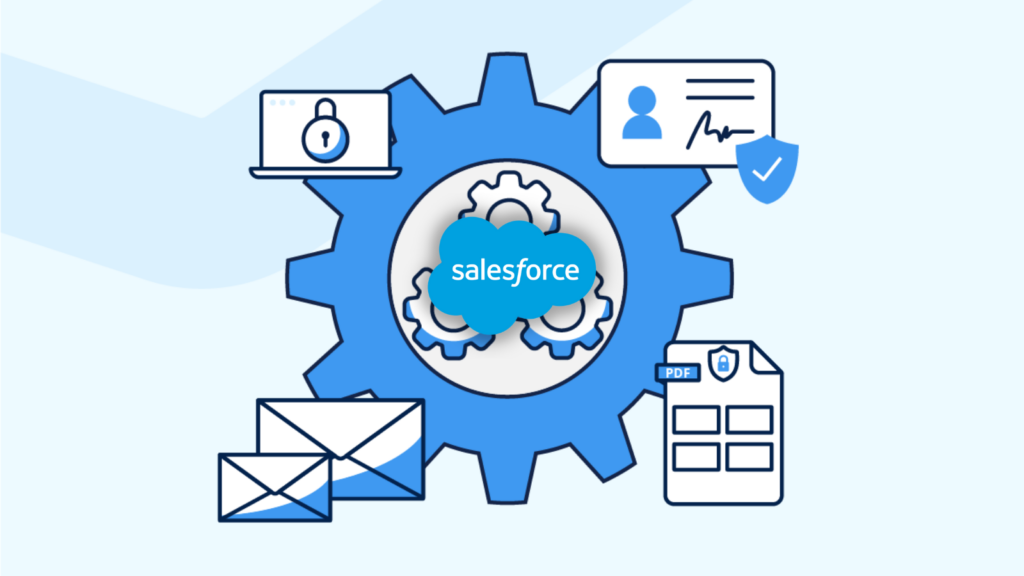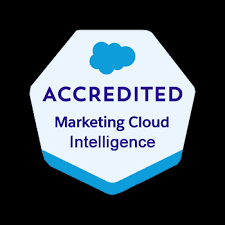In today’s fast-paced business landscape, efficiency reigns supreme, and the optimization of processes is paramount for success. Salesforce automation tools stand as indispensable allies in this pursuit, empowering businesses to automate repetitive tasks, eliminate errors, and liberate valuable time for employees to focus on mission-critical endeavors. From sales to marketing and customer service, Salesforce offers a comprehensive suite of automation tools designed to enhance efficiency, productivity, and ultimately, profitability.
This insight serves as a guide to the value and various components of Salesforce automation.
At the core of Salesforce’s effectiveness lies its sophisticated suite of automation tools, reshaping how organizations manage and streamline their sales operations. For administrators entrusted with overseeing the Salesforce environment, mastering these automation tools transcends mere skill; it’s a strategic necessity.
Salesforce Automation Tools empower administrators to craft and deploy intricate workflows, facilitating seamless coordination of tasks and processes within the CRM platform. From lead generation to deal closure, these tools offer a comprehensive array of features that can metamorphose manual, time-consuming tasks into streamlined, automated processes. As businesses aspire for agility and efficiency in their operations, administrators assume the role of architects, leveraging Salesforce automation tools to erect a robust foundation for success.
This deep dive into Salesforce Automation Tools aims to arm administrators with the knowledge and insights required to navigate the platform’s intricacies adeptly. We will dive into the fundamental components of automation, including workflow rules, process builder, and flow builder, unraveling their functionalities and showcasing how they can be tailored to suit specific business requirements. Through real-world examples and practical guidance, this exploration seeks to empower administrators to unleash the full potential of Salesforce Automation Tools, transforming them into proficient conductors of the CRM symphony.
As we embark on this journey, administrators will cultivate a comprehensive understanding of Salesforce’s automation capabilities, enabling them to optimize processes, enhance productivity, and elevate the overall user experience. Whether you’re a seasoned Salesforce administrator or a newcomer to the platform, this deep dive promises invaluable insights and hands-on expertise to navigate the dynamic realm of Salesforce automation with confidence and proficiency.
What is Salesforce Automation?
Salesforce automation represents a sophisticated sales management solution that automates pivotal sales components such as lead management, sales forecasting, and team performance management. Leveraging Software-as-a-Service (SaaS) products enables the automation of repetitive and redundant tasks and processes.
Workflow rules enable organizations to design and enforce business processes systematically. For example, as leads progress through the sales pipeline, workflow rules can automatically assign tasks to sales representatives, update opportunity stages, and notify relevant stakeholders. By establishing these rules, administrators lay the groundwork for a more streamlined and error-resistant workflow, allowing teams to focus on high-impact activities while the system handles routine, rule-based tasks.
Understanding the foundations of Salesforce automation through workflow rules is crucial for administrators seeking to optimize their CRM environment. As businesses evolve, the ability to adapt and scale automation becomes paramount. This foundational knowledge not only empowers administrators to create efficient workflows but also sets the stage for exploring more advanced automation tools within the Salesforce ecosystem, ensuring a robust and responsive foundation for the dynamic world of CRM.
Centralized Data Storage and Enhanced Lead Tracking
Centralizing customer-related data stands as one of the most significant advantages of Salesforce automation. This consolidation facilitates streamlined lead tracking, performance monitoring, and revenue prediction. By automating non-revenue-generating tasks, which can consume up to two-thirds of a sales representative’s time, sales teams can redirect their efforts towards high-impact, revenue-generating activities, thereby fostering overall business growth.
Automated Sales Processes: Boosting Productivity
The automation of repetitive sales processes emerges as a direct response to research indicating the imperative to enhance sales productivity. Through automation, sales representatives can leverage their time more effectively, focusing on tasks that directly contribute to revenue generation and organizational success.
Understanding the Crucial Role of Salesforce Automation
The importance of Salesforce automation cannot be overstated in the realm of sales management. By offering centralized data storage, streamlined lead tracking, and enhanced performance monitoring, Salesforce automation revolutionizes the sales landscape.
Discover – Controllers in Salesforce: What It Is, Types and Features.
Key Benefits of Salesforce Automation
The benefits of Salesforce automation are manifold. Firstly, it facilitates the consolidation of customer-related data, enabling efficient lead tracking, reminder setting, and performance monitoring. Additionally, automation saves time and minimizes errors, allowing sales representatives to concentrate on revenue-generating activities such as deal closure and client relationship building. Moreover, Salesforce automation ensures a personalized and consistent customer experience, empowering sales reps to tailor interactions based on customer preferences and behaviors.
Furthermore, Salesforce automation fosters efficient collaboration and communication within sales teams, providing a centralized platform for accessing essential information and insights. Additionally, it offers valuable analytics and insights to optimize sales strategies, analyzing customer behavior, sales performance, and market trends to drive revenue growth.
Components of Salesforce Automation
Lead Management: Involves collecting, tracking, and analyzing customer data and interactions to streamline the sales pipeline and convert leads into customers.
Sales Forecasting: Enables organizations to make educated decisions and prepare for future development by forecasting sales revenue based on market analysis and demands.
Team Performance Management: Involves monitoring sales team performance, identifying areas for improvement, and providing feedback and coaching to enhance team performance.
Email and Social Media Marketing: Automates marketing platforms to communicate better with consumers and prospects, customizing campaigns based on customer preferences and behaviors.
Workflow and Approval Processes: Ensures that sales processes follow established procedures and workflows, reducing manual errors and enhancing organizational performance.
Data and Analytics: Tracks key performance indicators (KPIs) and provides actionable insights to inform decision-making and drive revenue growth.
Streamlining Appointment Scheduling: Assists in scheduling sales appointments efficiently, mitigating the risk of double-booking meetings.
Prioritizing Leads: Analyzes leads based on various metrics to maximize sales and productivity.
Salesforce automation has revolutionized sales operations, fostering efficiency, effectiveness, and customer-centricity. As technology continues to evolve, Salesforce automation remains a critical tool for businesses striving to stay ahead of the competition and achieve their sales goals.
In the dynamic world of Salesforce, administrators are continuously seeking ways to enhance their automation capabilities beyond the fundamentals. Here steps in the Process Builder, a sophisticated tool that elevates automation to new heights by offering a visual interface to design and execute complex processes. This advanced feature empowers administrators to fully leverage Salesforce automation, catering to intricate business scenarios and demanding workflows with ease.
The Process Builder represents a game-changer for administrators striving to create dynamic, multi-step processes without the need for intricate coding. With its intuitive point-and-click interface, administrators can define processes that respond to various conditions, automating tasks that traditionally required extensive customization. From updating multiple records simultaneously to orchestrating intricate business logic, the Process Builder offers a versatile solution for automating nuanced processes within the Salesforce ecosystem.
In the realm of Salesforce automation, the Process Builder underscores the platform’s commitment to providing powerful yet accessible tools for administrators. As organizations evolve, the Process Builder empowers administrators to adapt and innovate, ensuring their Salesforce environment remains dynamic and responsive within their broader business strategy.
User-Centric Automation: Enhancing Experiences with Flow Builder
User experience holds increasing importance in the realm of Salesforce automation. Enter Flow Builder, a tool designed to empower administrators to create dynamic and user-friendly workflows within the Salesforce platform. Unlike traditional automation tools, Flow Builder provides a visual canvas for designing flows, making it accessible to administrators with diverse levels of technical expertise and enabling them to craft processes that prioritize the end-user experience.
Flow Builder acts as a catalyst for user-centric automation by offering a versatile set of features. Administrators can design flows that guide users through specific processes, collecting and updating data along the way. This visual, point-and-click tool enables the creation of interactive screens, allowing users to input information seamlessly and participate in complex workflows without extensive training. By prioritizing ease of use, Flow Builder enhances user adoption and engagement within the Salesforce environment.
As organizations aim to optimize their Salesforce environments, the focus on user-centric automation becomes a strategic imperative. Flow Builder not only empowers administrators to design workflows aligned with the unique needs of their users but also contributes to a more intuitive and enjoyable experience within the CRM platform. By prioritizing user-centric automation, organizations ensure that their Salesforce environment not only meets business objectives but also fosters a positive and productive user experience.
Integration Strategies: Creating a Unified Automation Ecosystem
In the complex world of modern business operations, seamless integration of Salesforce automation tools with external systems is crucial for maximizing efficiency and functionality. Integration strategies play a pivotal role in creating a unified automation ecosystem, enabling organizations to harness the collective power of Salesforce alongside other applications and databases.
A fundamental consideration in integration is establishing a cohesive environment where data flows seamlessly between Salesforce and external systems. This requires a strategic approach to connecting disparate platforms, ensuring accurate data transfer and real-time synchronization. Administrators must evaluate their organization’s specific requirements, identifying key touchpoints where integration can eliminate silos and enhance workflow. Tectonic can assist you with this.
Salesforce’s robust set of APIs and connectors facilitates integration with a wide array of third-party applications, ERPs, and databases. Whether synchronizing customer data, connecting with marketing automation platforms, or streamlining financial processes, Salesforce automation tools’ integration capabilities provide a foundation for creating a unified and interconnected automation ecosystem. This interconnectedness empowers organizations to leverage different tools’ strengths cohesively, enhancing overall business process effectiveness.
🔔🔔 Follow us on LinkedIn 🔔🔔
Content updated May 2024.













